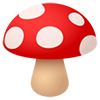-
Posts
239 -
Joined
-
Last visited
-
Days Won
2
Content Type
Profiles
Forums
Articles
Downloads
Gallery
Blogs
Everything posted by In virtute Dei
-
Examu eX-BOARD Release Date: 2008 Developer: Examu Manufacturer: Examu Max Controllers: 2 CPU: Fanless Via C7 NanoBGA2 Memory: 1 GB DDR2 SRAM Graphics: Integrated S3 UniChrome Pro AGP Graphics Sound: JAMMA ? Display: Dependent on Arcade Cabinet Media: N/A Overview: eX-BOARD is an arcade system board released in 2008 by the Japanese company Examu. Source: https://en.wikipedia.org/wiki/EX-BOARD Image Source: http://2.bp.blogspot.com/_eMti2g5RHlo/TKQJr7DMH-I/AAAAAAAAA_Y/CSinvlB_6ys/s1600/1.jpg
-
-
Epoch Game Pocket Computer Release Date: 1984 Developer: Epoch Manufacturer: Epoch Max Controllers: Handheld CPU: NEC μPD78c06, 6 MHz Memory: 2176 Bytes RAM, 4KB ROM Graphics: 1-Plane Bitmap Format Sound: 1 Piezoelectric Channel Display: 75 x 64 Media: Cartridge Overview: The Epoch Game Pocket Computer is a handheld game console released by Epoch in Japan in 1984. It was one of the very few truly handheld systems to be released in the early 1980s, preceding the Game Boy by 5 years. The Game Pocket Computer used an LCD screen with a 75 × 64 resolution,and could produce graphics at about the same level as early Atari 2600 games. The system was a failure in Japan, and as a result, only 5 games were made for it. Source: http://www.chrismcovell.com/GamePokekon/ Source: https://en.wikipedia.org/wiki/Epoch_Game_Pocket_Computer Image Source: http://f.tqn.com/y/psp/1/W/G/X/-/-/epoch.jpg
-
-
-
-
Bigbox uses quite a bit of RAM at times, how much do you have? And you have to download videos either online or from the downloads section in the forums and there should be further instructions there to make it look beautiful.
-
Elektronika BK Release Date: 1984 Developer: NPO Scientific Center Manufacturer: NPO Scientific Center Max Controllers: 1 CPU: K1801VM1, 3MHz - 4.6MHz (Depending on the Model) Memory: 32KB Graphics: K1801VP1-037 VDC Sound: General Instrument AY-3-8910 Display: 512 x 256 Media: Cassette Tape, Floppy Overview: The Electronika BK was a series of 16-bit PDP-11-compatible Soviet home computers developed by NPO Scientific Center, the leading Soviet microcomputer design team at the time. It was also responsible for the more powerful UKNC and DVK micros. First released in 1984 (developed in 1983), they were based on the К1801ВМ1 (Soviet LSI-11-compatible CPU) and were the only "official" Soviet home computer design in mass production. Source: https://en.wikipedia.org/wiki/Electronika_BK Image Source: http://www.ipcm.org.il/_image/table/Elektronika.png Only Decent One I could find..,
-
EACA EG2000 Colour Genie Image Source: http://media-cache-ec0.pinimg.com/736x/55/0e/28/550e28f949765bb408e00181fee8987f.jpg
-
-
Crystal System Release Date: 2001 Source: https://fr.wikipedia.org/wiki/Crystal_System Image Source: http://www.retrogamer.ca/wp-content/uploads/2015/05/brezzasoft_crystalsystem_banner.jpg
-
Commodore VIC-20 Release Date: 1980/1981 Developer: Commodore International Manufacturer: Commodore International Max Controllers: 1 CPU: MOS Technology 6502 Memory: 5 KB RAM, 20 KB ROM Graphics: MOS Technology VIC Sound: 3 Pulse Wave Sound Generators Display: 176 x 184 Media: ROM Cartridge Overview: The VIC-20 (Germany: VC-20;Japan: VIC-1001) is an 8-bit home computer that was sold by Commodore Business Machines. The VIC-20 was announced in 1980,roughly three years after Commodore's first personal computer, the PET. The VIC-20 was the first computer of any description to sell one million units. Source: https://en.wikipedia.org/wiki/Commodore_VIC-20 Image: Viking
-
Commodore Plus 4 Release Date: 1984 Developer: Commodore International Manufacturer: Commodore International Max Controllers: 2 CPU: MOS Technology 8501 Memory: 64 KB RAM, 64 KB ROM Graphics: MOS Technology TED Sound: MOS Technology TED Display: 320 x 200 Media: ROM Cartridge, Cassette Tape Overview: The Commodore Plus/4 is a home computer released by Commodore International in 1984. The "Plus/4" name refers to the four-application ROM resident office suite (word processor, spreadsheet, database, and graphing); it was billed as "the productivity computer with software built-in". Internally, the Plus/4 shares the same basic architecture as the lower-end Commodore 16 and 116 models, and is able to use software and peripherals designed for them. However, it is not compatible with the well-established Commodore 64. While the Plus/4 had some success in Europe, it was a failure in the United States, where it was derided as the "Minus/60". Source: https://en.wikipedia.org/wiki/Commodore_Plus/4 Image Source: https://en.wikipedia.org/wiki/Commodore_Plus/4
-
Commodore PET Release Date: October 1977 Developer: Commodore International Manufacturer: Commodore International Max Controllers: 1 CPU: MOS Technology 6502, 1 MHz Memory: 4KB-96KB, Depending on the Model Graphics: TTL Video Circuit Sound: None Display: 40 x 25 Media: Cassette Tape, 5.25" Floppy, 8" Floppy Overview: The Commodore PET (Personal Electronic Transactor) is a line of home/personal computers produced starting in 1977 by Commodore International. A top-seller in the Canadian and United States educational markets, it was Commodore's first full-featured computer, and formed the basis for their entire 8-bit product line, including the Commodore 64. The first model, which was named the PET 2001, was the first personal computer ever made available to retail consumers. Source: https://en.wikipedia.org/wiki/Commodore_PET Image Source: https://en.wikipedia.org/wiki/Commodore_PET#PET_2001_series_.2F_2001-N_.26_-B_series.2C_CBM_3000_series
-
Commodore MAX Machine Release Date: 1982 Developer: Commodore International Manufacturer: Commodore International Max Controllers: 1 CPU: MOS Technology 6510, 1.02 MHz Memory: 2 KB RAM Graphics: VIC-II 6566 Sound: SID Sound Chip Display: 320 x 200 Media: ROM Cartridge Overview: The Commodore MAX Machine, also known as Ultimax in the United States and VC-10 in Germany, was a home computer designed and sold by Commodore International in Japan, beginning in early 1982, a predecessor to the popular Commodore 64. The Commodore 64 manual mentions the machine by name, suggesting that Commodore intended to sell the machine internationally; however, it is unclear whether the machine was ever actually sold outside Japan. It is considered a rarity. Source: https://en.wikipedia.org/wiki/Commodore_MAX_Machine Image Source: https://en.wikipedia.org/wiki/Commodore_MAX_Machine
-
Commodore CDTV Release Date: March 1991 Developer: Commodore International Manufacturer: Commodore International Max Controllers: 1 CPU: Motorola 68000, 7.16 MHz Memory: 1 MB Amiga Chip RAM Graphics: 12-bit Color Palette Sound: 4 x 8-bit PCM Channels Display: 320 x 200, 320 x 256 Media: CD-ROM, Floppy Overview: The CDTV (an acronym for "Commodore Dynamic Total Vision", a backronym of an acronym for "Compact Disc Television", giving it a double meaning) is a multimedia platform developed by Commodore International and launched in March 1991. The CDTV was intended as a media appliance rather than a personal computer. Source: https://en.wikipedia.org/wiki/Commodore_CDTV Source: http://oldcomputers.net/cdtv.html Image Source: ClownClone
-
That's awesome @viking it will save me a ton of time trying to find the super obscure ones...haha, now I can focus on the actual metadata itself.:)
-
@Vlansix Okay awesome, thanks! Some of the images have been hard to track down to so it makes it fun haha. And No problem Alex, I am enjoying learning about some of these obscure platforms and stuff
-
@Vlansix Before I do more research on the rest of the platforms, is the format that I'm posting this look okay to you?
-
Commodore 64 Overview: The Commodore 64 is an 8-bit home computer introduced in January 1982 by Commodore International. It is listed in the Guinness World Records as the highest-selling single computer model of all time, with independent estimates placing the number sold between 10 and 17 million units.Volume production started in early 1982, marketing in August for US$595 (equivalent to $1,461 in 2015). Preceded by the Commodore VIC-20 and Commodore PET, the C64 took its name from its 64 kilobytes (65,536 bytes) of RAM. It had superior sound and graphical specifications compared to other earlier systems such as the Apple II and Atari 800, with multi-color sprites and a more advanced sound processor. Source: https://en.wikipedia.org/wiki/Commodore_64 Image Source: Viking
-
Commodore 128 Release Date: January 1985 Developer: Commodore Business Machines Manufacturer: Commodore Business Machines Max Controllers: 1 CPU: MOS Technology 8502, 2 MHz, Zilog Z80, 4 MHz, and MOS Technology 6502 Memory: 128 KB RAM Graphics: MOS 8564/8566 VIC-II Sound: MOS 6581 SID synthesizer chip Display: 160 x 200, 320 x 200 Media: Floppy Overview: The Commodore 128, also known as the C128, C-128, C= 128,or occasionally CBM 128, is the last 8-bit home computer that was commercially released by Commodore Business Machines (CBM). Introduced in January 1985 at the CES in Las Vegas, it appeared three years after its predecessor, the bestselling Commodore 64. Source: https://en.wikipedia.org/wiki/Commodore_128#Specifications Image Source: https://en.wikipedia.org/wiki/Commodore_128#/media/File:Commodore-128.png
-
Colecovision Image Source: http://img1.wikia.nocookie.net/__cb20120513214037/mario/images/f/f6/ColecoVision_Model.png
-
Coleco ADAM Release Date: October 1983 Developer: Coleco Manufacturer: Coleco Max Controllers: 1 CPU: Zilog Z80, 3.58 MHz Memory: 80 KB RAM, 16 KB VRAM, 32 KB ROM Graphics: Texas Instruments TMS9928A Sound: Texas Instruments SN76489AN Display: 256 x 192 Media: ROM Cartridge, Floppy Overview: The Coleco Adam is a home computer, and expansion for the ColecoVision (port 3), released in 1983 by American toy manufacturer Coleco. It was an attempt to follow on the success of the company's ColecoVision video game console. The Adam was not very successful, partly because of early production problems, and was orphaned in early 1985. Source: https://en.wikipedia.org/wiki/Coleco_Adam Image Source: Viking
-
Casio PV-1000 Release Date: October 1983 Developer: Casio Manufacturer: Casio Max Controllers: 2 CPU: Z80A, 3.579 MHz Memory: 2KB RAM Graphics: 8 Colors Sound: D65010G031, 3 Channel Display: 256 x 192 Media: ROM Cartridge Overview: The PV-1000 (ぴーぶいせん Pi Bui-Sen) is a home video game console manufactured by Casio and released in Japan in 1983. The PV-1000 was powered by a Z80A micro-processor, and had 2 KB RAM available, with 1 KB devoted to its character generator. It had a 256x192 pixel resolution and had 8 available colours. It was released alongside a computer known as the PV-2000, which is compatible with PV-1000 controllers but not games. In the same year Casio released two other consoles, the PV-7 and the PV-16 which were MSX computers. The PV-1000 initially sold for 14,800¥. Source: https://en.wikipedia.org/wiki/PV-1000 Source: http://www.videogameconsolelibrary.com/pg80-pv1000.htm#page=specs Image Source: https://en.wikipedia.org/wiki/PV-1000#/media/File:Casio-PV1000-Console-Set.png Cave Image Source: Viking
-
Casio Loopy Release Date: October 19, 1995 Developer: Casio Manufacturer: Casio Max Controllers: 1 CPU: 32-bit RISC SH-1 (SH7021) Memory: Unknown Graphics: 32-Bit Sound: Unknown Display: Unknown Media: Cartridge Overview: The Casio Loopy (ルーピー Rūpī?), subtitled My Seal Computer SV-100, is a 32-bit home video game console sold exclusively in Japan. Released in October 1995,it was unique in that the marketing for it was completely targeted to female gamers. The Loopy included a built-in thermal color printer that could be used to create stickers from game screenshots. An optional accessory, called Magical Shop, allowed the machine to be used with outside devices (such as VCRs and DVD players) to obtain images from them, add text, and make stickers from those as well. Including Magical Shop, which contains its own built-in software, the Loopy game library contains 11 titles. The CPU is the same as Sega 32X CPU. The Loopy features one controller port for use with a standard game controller or with a mouse (sold separately). Noted developer Kenji Terada worked on Loopy Town no Oheya ga Hoshii! [Very Little Information of the Technical Side for this Japanese-only Console] Source: https://en.wikipedia.org/wiki/Casio_Loopy Source: http://www.racketboy.com/retro/casio-loopy-101-32-bit-japanese-console-for-girls Source: http://www.videogameconsolelibrary.com/pg90-loopy.htm#page=specs















_(xparent_bg).thumb.png.934debbe9d8da332aedb0a363a9df1d7.png)






